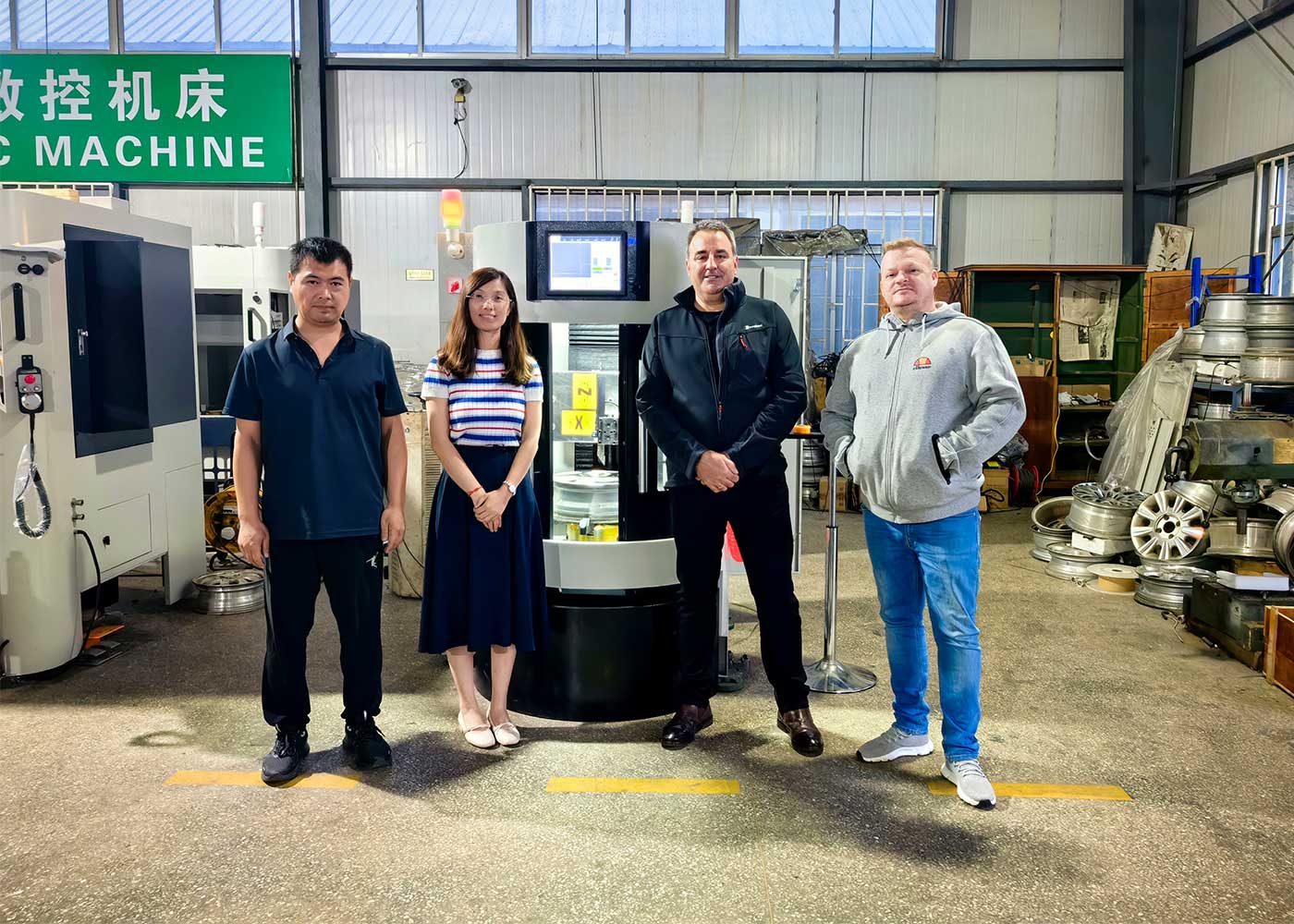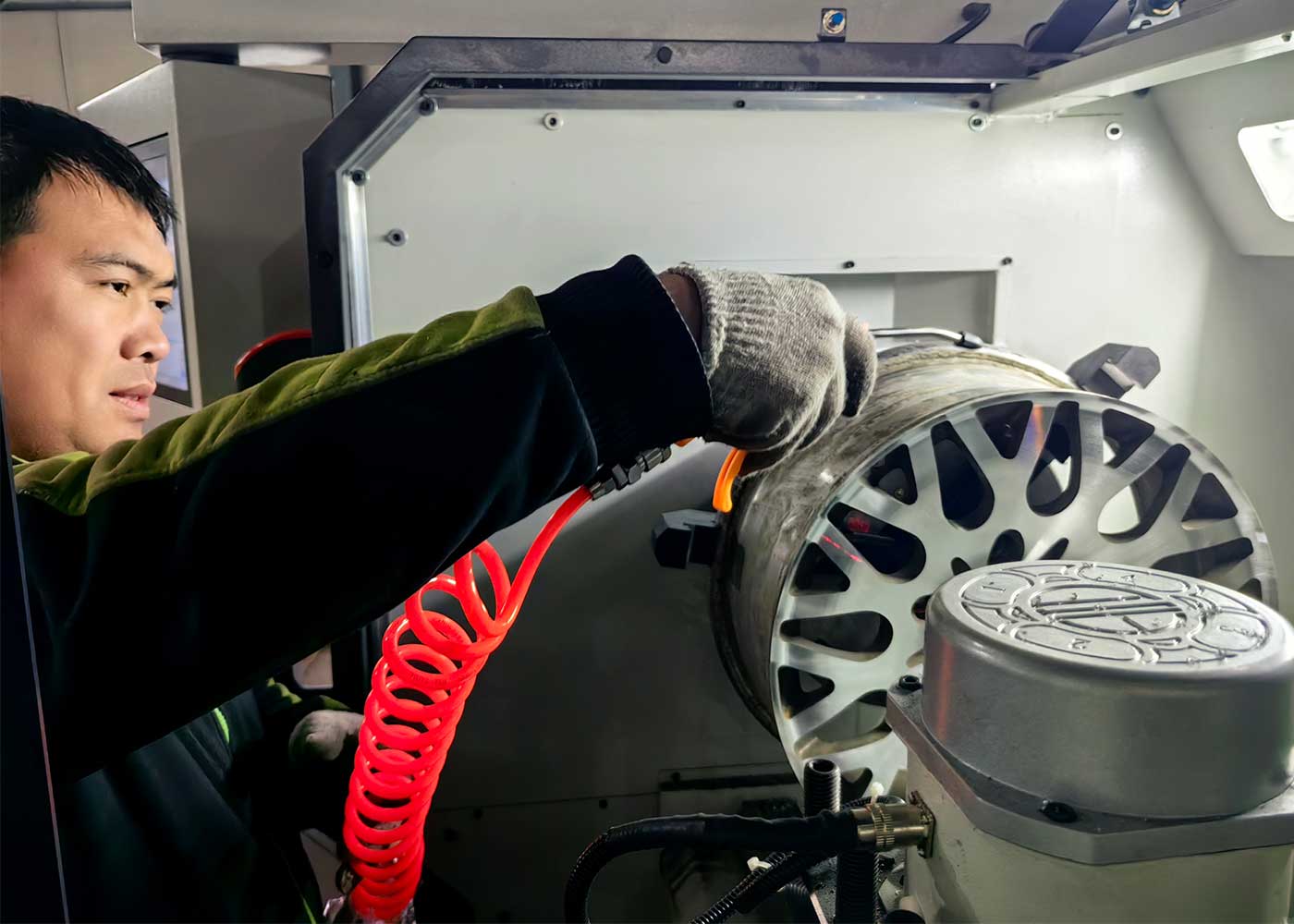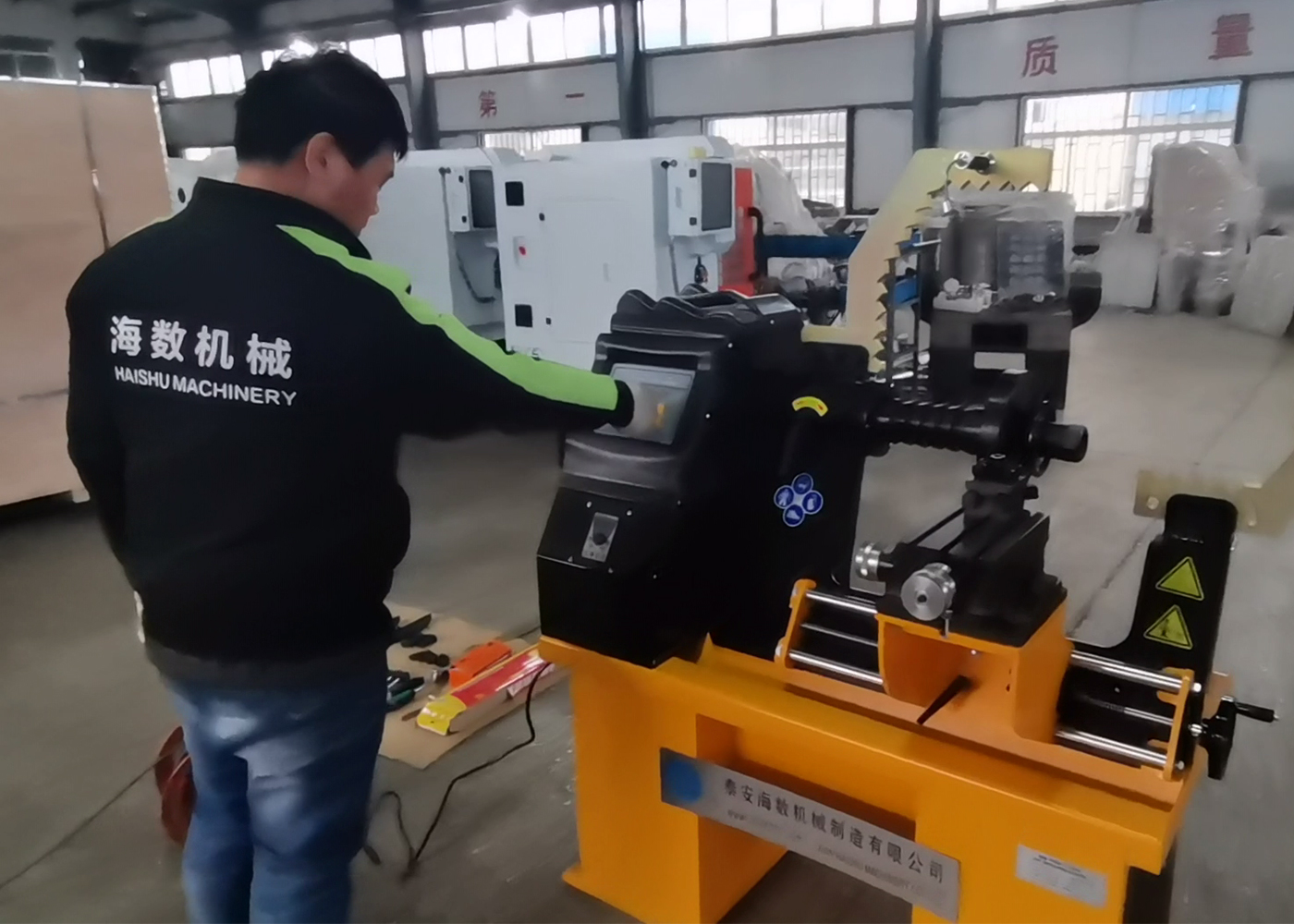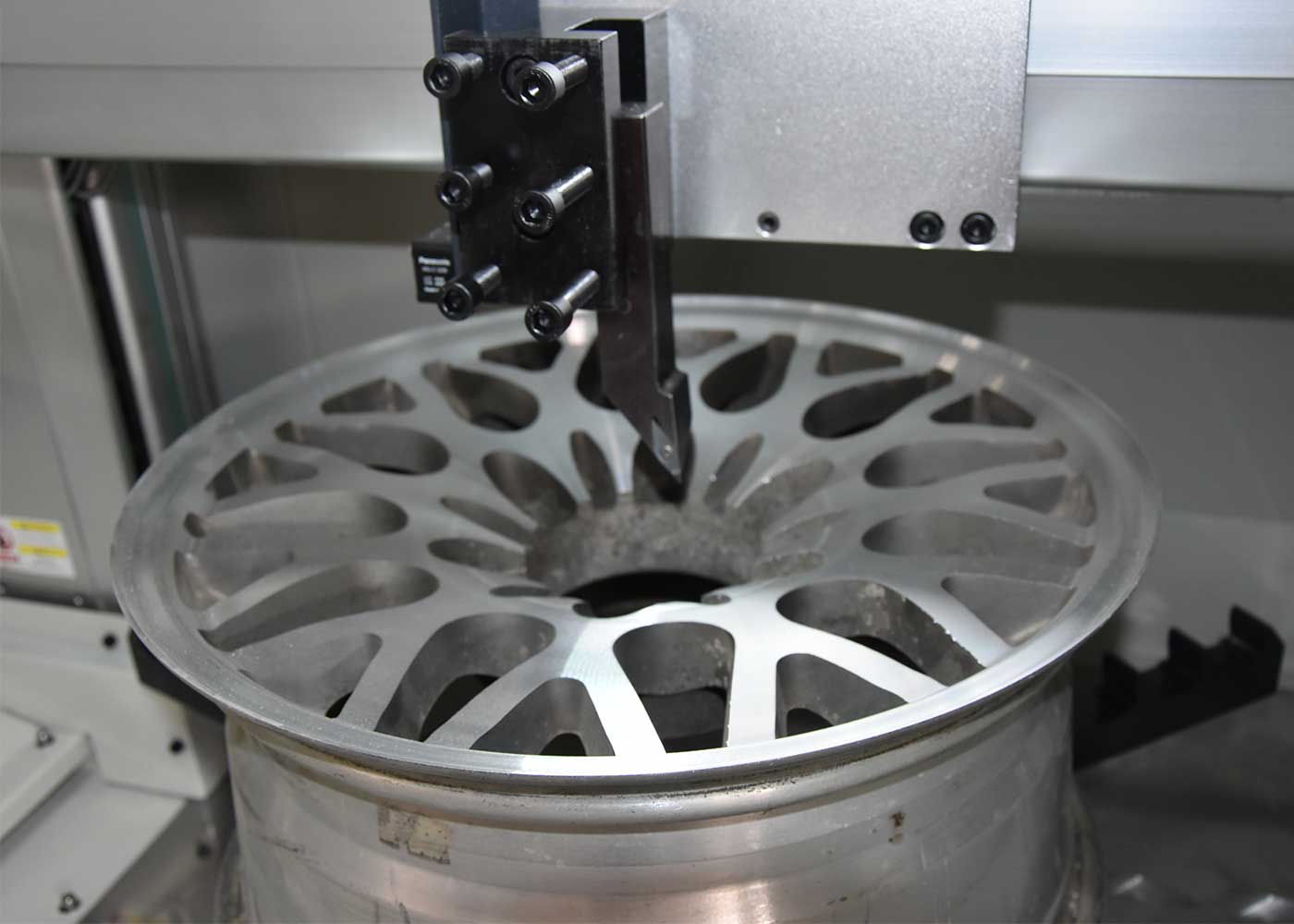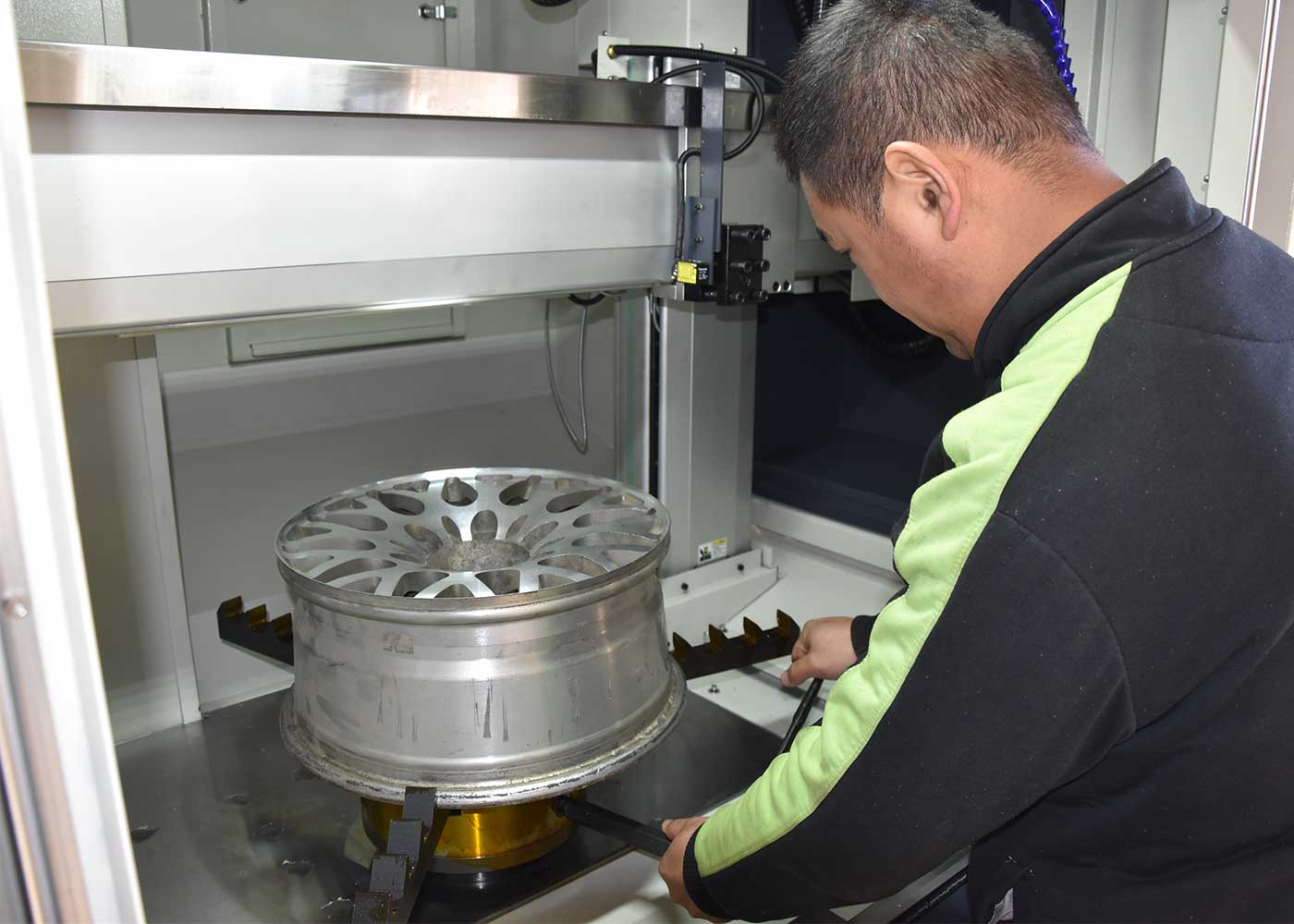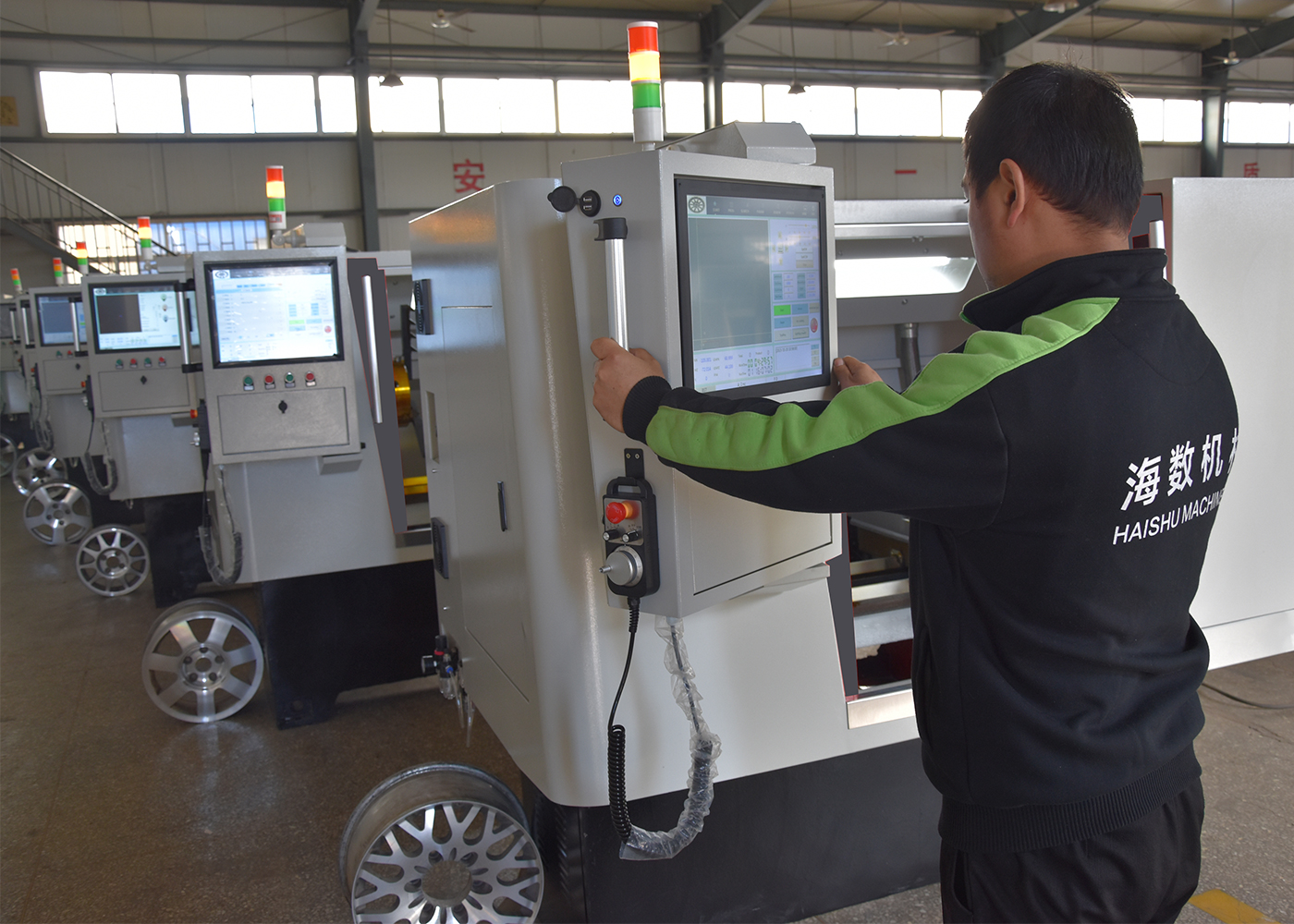Examining the Repair Process for Deformed Wheels
Introduction to Deformed Wheel Repair
Deformed wheels pose a significant challenge for vehicle owners, often due to impacts or driving incidents. Determining whether these wheels are candidates for repair or if they need replacement is crucial for safety and performance. Modern tools such as wheel repair lathes, alloy wheel repair machines, and wheel CNC machines have revolutionized the approach to fixing deformed wheels. This article will guide you through the repair process, highlighting safety considerations and the capabilities of different repair equipment.
Diagnosing Deformation with CNC Technology
The Role of Wheel Repair Lathes
Identifying the extent of a wheel’s deformation is a critical first step. Using a wheel repair lathe with precision measurement capabilities allows for an accurate assessment. A wheel is mounted onto the fixture of the lathe, and specialists utilize its features to determine the damage’s severity.
Safety and Restoration
Concerns often arise regarding the safety of a wheel restored by a wheel repair machine. Although a wheel CNC machine can refine a wheel to near-original appearance, it is essential to consider whether the structural integrity has been compromised.
Heat Treatment in Repair
Applying heat to reshape the metal is a common step in the process. Rim repair equipment with temperature controls ensures the wheel is heated appropriately, maintaining the balance between formability and material properties.
Evaluating Repair or Replacement for Deformed Wheels
Assessing the Risks
Not all deformations are equally repairable. The repaired wheel’s metal may never regain its original strength, which can lead to fatigue cracks or failure. It is vital to understand the limitations of a wheel restoration machine.
Limitations of Rim Straightening Machines
A rim straightening machine is useful for minor corrections but may not restore the wheel to its full original strength. The process changes the metal’s properties, potentially reducing the wheel’s durability.
Automated Repair and Safety
Automated wheel repair machines offer efficiency and precision, such as with diamond cutting. Yet, for deformed wheels, the safety risks should be carefully weighed against these benefits.
Advanced Techniques in Wheel Repair
Precision with Alloy Wheel Lathes
An alloy wheel diamond cutting machine can achieve a high-quality finish. However, the aesthetic improvement does not guarantee the restoration of the wheel’s structural integrity.
HAISHU: A Leader in Wheel Repair Solutions
Expertise in CNC Wheel Repair
HAISHU offers a range of CNC wheel lathe models suited for various repair tasks. With their extensive experience, they provide solutions for different repair scenarios, ensuring a precise and safe restoration process.
Training and Support for Operators
HAISHU also provides robust training and support for operators, ensuring that users of equipment like the vertical wheel repair lathe are competent and confident in their tasks.
Conclusion: Making Informed Decisions on Deformed Wheels
When facing deformed wheels, the choice between repair and replacement is critical. With the availability of advanced repair technology, the option to repair is tempting. However, ensuring vehicle safety should always be the priority. HAISHU is equipped to deliver both the tools and the training required for wheel repair, emphasizing precision and safety. It is crucial to prioritize structural integrity and consult professionals when addressing deformed wheels.
